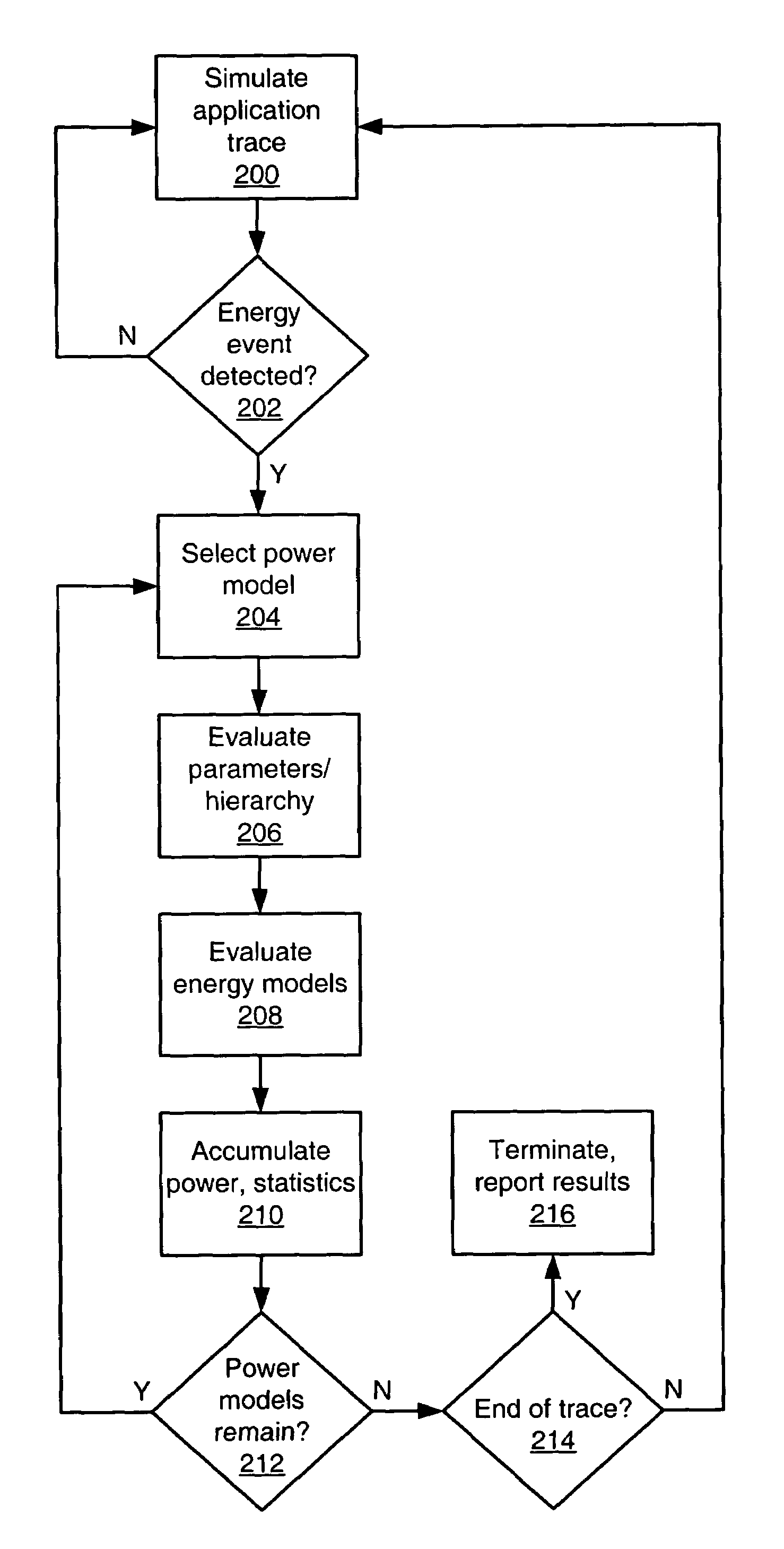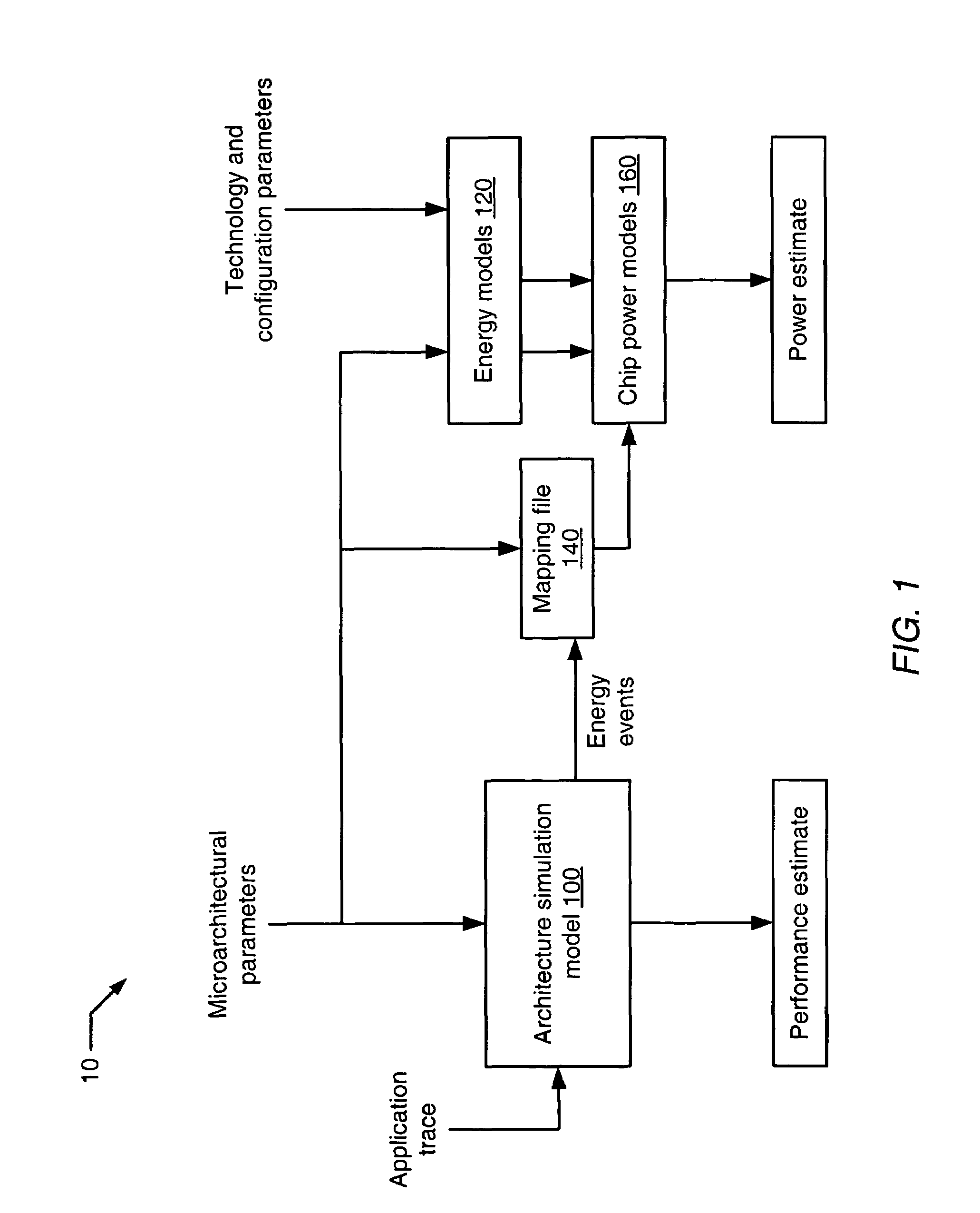Method and system for architectural power estimation
a technology of power estimation and architecture, applied in the direction of cad circuit design, program control, instruments, etc., can solve the problems of increasing the power consumption of integrated circuits at the cost of similarly dramatic increases in integrated circuit power consumption, increasing switching speed, and directly affecting the cost of building a system including such circuits
- Summary
- Abstract
- Description
- Claims
- Application Information
AI Technical Summary
Benefits of technology
Problems solved by technology
Method used
Image
Examples
Embodiment Construction
[0014]Power Estimation Methodology
[0015]Turning now to FIG. 1, a block diagram illustrating one embodiment of a methodology for estimating power consumption in an integrated circuit is shown. Methodology 10 includes an architecture simulation model 100 configured to receive architectural parameters and an application trace and to produce a performance estimate as well as energy events. Methodology 10 also includes a plurality of energy models 120 configured to receive technology and configuration parameters. Mapping file 140 is configured to receive energy events from architecture simulation model 100 to be mapped onto a plurality of chip power models 160. Chip power models 160 are configured to receive energy models 120 and to produce a power estimate.
[0016]Architecture Simulation Model
[0017]Architecture simulation model 100 may include a microarchitecture performance model of an integrated circuit, such as an Athlon™ microprocessor, for example. Such a performance model may includ...
PUM
 Login to View More
Login to View More Abstract
Description
Claims
Application Information
 Login to View More
Login to View More - R&D
- Intellectual Property
- Life Sciences
- Materials
- Tech Scout
- Unparalleled Data Quality
- Higher Quality Content
- 60% Fewer Hallucinations
Browse by: Latest US Patents, China's latest patents, Technical Efficacy Thesaurus, Application Domain, Technology Topic, Popular Technical Reports.
© 2025 PatSnap. All rights reserved.Legal|Privacy policy|Modern Slavery Act Transparency Statement|Sitemap|About US| Contact US: help@patsnap.com



